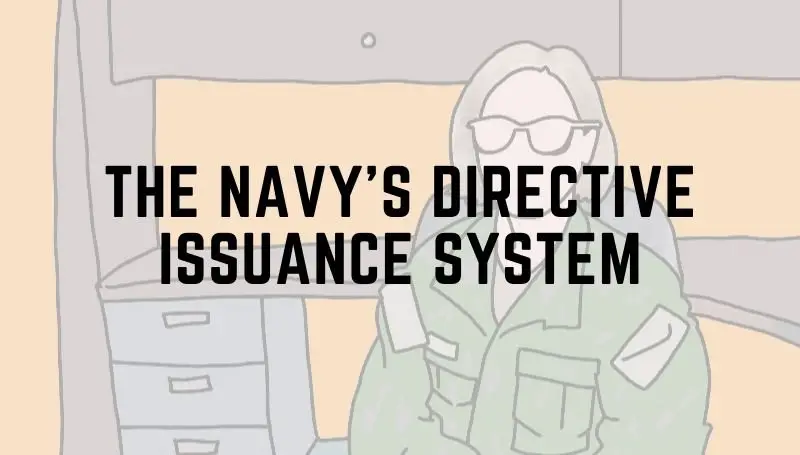An administrative HM billet is in charge of maintaining the command’s files and Navy directives. Check out OPNAVINST 5215.17 series, Navy Directives Issuance System for more detail about their responsibilities.
There are 2 types of directives and each has a purpose
- Permanent
- Regulate administration
- Establishes policies
- Delegate authority
- Assign mission functions or tasks
- Temporary
- Notice for comments or approval
- Announcing information
- Limitations are no more than 1 year
How to add, remove and change transmittals
This is where you make changes to instructions and notices. You must describe the nature of the change and provide directions for making it. You do this by:
- Adding new pages
- Removing old pages
- Pen and inking changes
Make sure to number these changes consecutively for example. The first change is labeled Change Transmittal 1, the second is Change Transmittal 2, and so on.
These changes are filed in front of the previous transmittal showing the most current change on top.
HM administrators are responsible for correspondence
Administrative HM’s must be able to:
- Create a correspondence
- Maintain directives and logs
- Submit reports
- Efficiently file correspondence to quick retrieval
These correspondences are referred to as the Standard Naval Letter and are used when working with other US government agencies. It can be used in some cases with civilian companies.
The method of writing correspondence is very specific and must be followed to every last detail.
If you want to learn more about how to do so please check out SECNAVINST 5216.5 series, Department of the Navy Correspondence Manual.
Maintaining directives
You’ll find instructions in binders in numerical sequins according to a Standard Subject Identification Code (SSIC) number. It might even be found in a CD-ROM library.
Where are classified directives found? Classified directives are kept in a safe and you can learn more about it by looking up SECNAV M-5510.36 series, Department of the Navy Information Security Program.
File number
The SSIC system of coding correspondence uses a 4 or 5 digit number to show the subject matter.
It’s standardized to help anyone who’s moving from one place to another. You can find out more about SSICs in SECNAVINST 5210.11 series, Department of the Navy Standard Subject Identification Codes.
These are for both Navy and Marine letters, messages, directives, forms, and reports.
Numerical Subject Grouping
| Series | Major SSIC groups |
|---|---|
| 1000 | Military personnel |
| 2000 | Telecommunications |
| 3000 | Operations and readiness |
| 4000 | Logistics |
| 5000 | General administration and management |
| 6000 | Medicine and dentistry |
| 7000 | Financial management |
| 8000 | Ordnance material |
| 9000 | Ships design and material |
| 10000 | General material |
| 11000 | Facilities and activities ashore |
| 12000 | Civilian personnel |
| 13000 | Aeronautical and astronautical material |
| 16000 | Coast guard missions |
These major groups are then subdivided into even more specific groups labeled as primary, secondary, and tertiary subdivisions.
- Primary is designated by the last 3 numbers of the series code
- Secondary is the last 2 digits
- Tertiary is the last digit
An example would be 6000 being Medicine and dentistry, while 6400 is the primary special fields. Then there’s 6420 which is submarine and diving medicine as secondary and 6421 as the hyperbaric treatment for diving accidents being tertiary.
Classifying
Classifying is the process of determining the correct subject group or name-title codes under which correspondence should be filed and any subordinate subjects that should be cross-referenced.
The proper method to classify a document by particularly by subject is to select the SSIC that closely corresponds to the subject of the document.
Management of records
SECNAVINST 5210.8 series, Department of the Navy Records Management Program provides guidance for records management, use, and disposition. It gives instructions on how to retain records and how to dispose of them when they expire.
Always get the help of superiors if the HM is unsure of how or what to dispose.


